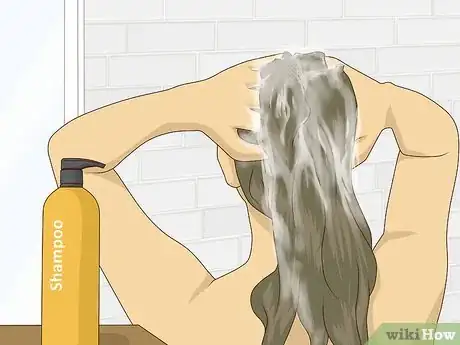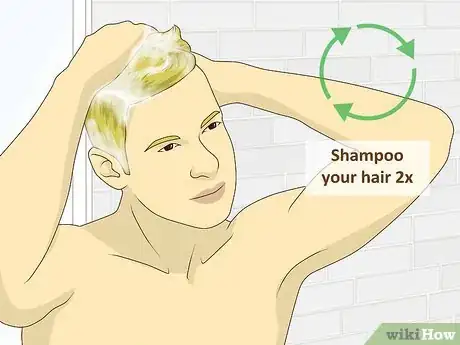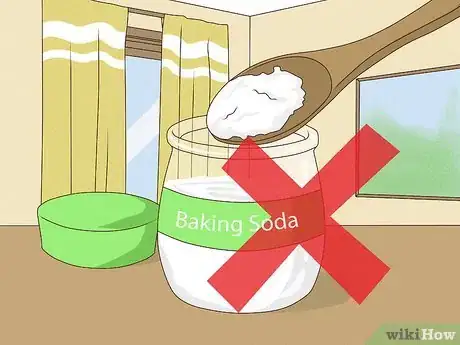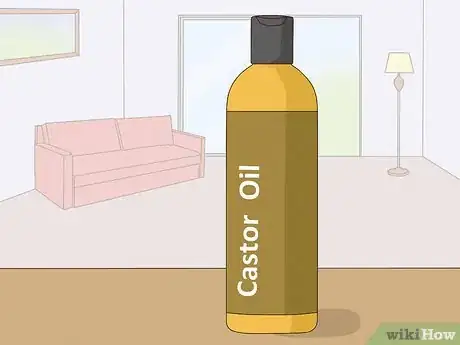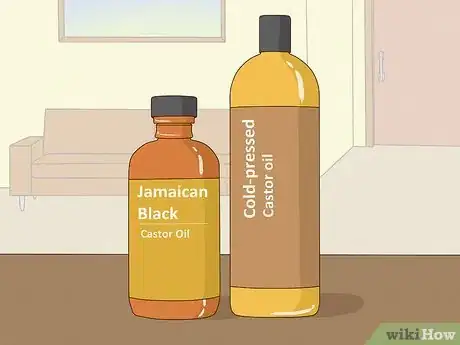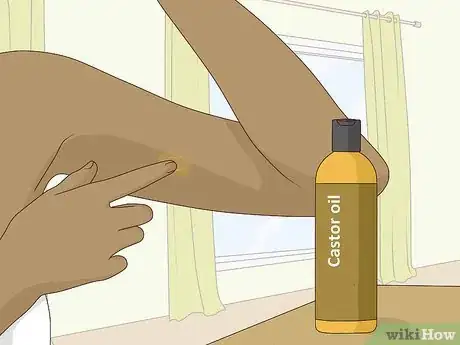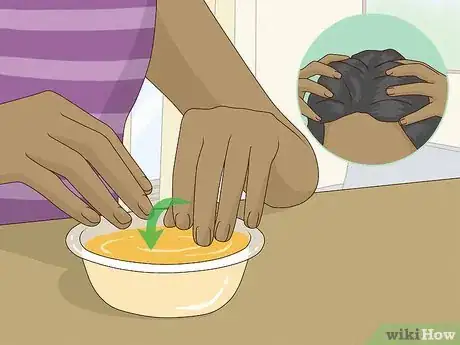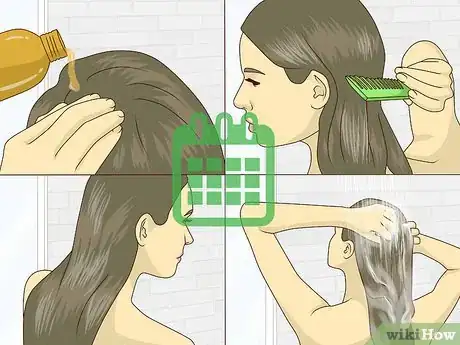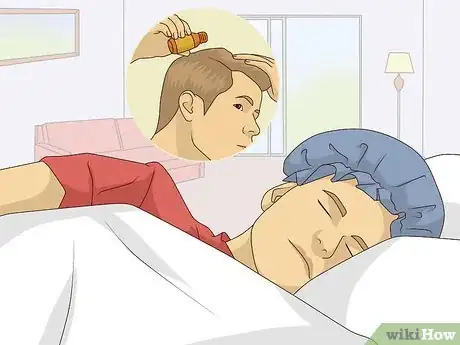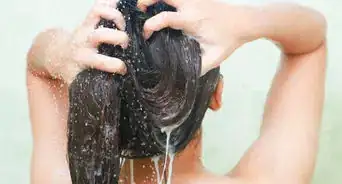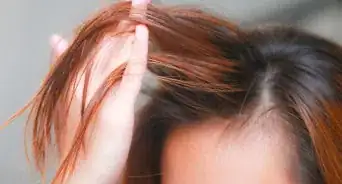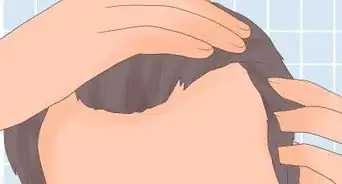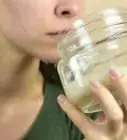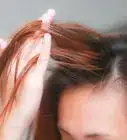This article was co-authored by Courtney Foster. Courtney Foster is a Licensed Cosmetologist, Certified Hair Loss Practitioner, and Cosmetology Educator based out of New York City. Courtney runs Courtney Foster Beauty, LLC and her work has been featured on The Wendy Williams Show, Good Morning America, The Today Show, The Late Show with David Letterman, and in East/West Magazine. She received her Cosmetology License from the State of New York after training at the Empire Beauty School - Manhattan.
There are 8 references cited in this article, which can be found at the bottom of the page.
This article has been viewed 35,331 times.
Castor oil has been all the rage lately as a hair product, but it’s actually been used in hair from as far back as ancient Egypt![1] Castor oil is derived from the bean of the castor plant, and it's great for treating an irritated scalp and dry hair. But it can also be tricky to wash out and remove all of the oily residue when you’re finished. Luckily, you can use shampoo to remove castor oil from your hair so you're left with shiny, healthy strands.
Steps
Removing the Oil
-
1Stick to regular shampoo to avoid drying out your hair and scalp. Take a hot shower and apply shampoo evenly through your hair. Rinse out the shampoo to flush out the excess oil and remove the residue from your hair and scalp.[2]
- You should be left with shiny conditioned hair.
- Clarifying shampoos are designed to strip your hair of oil, which would undo the hydrating benefits of using castor oil.[3] Stick to standard shampoo to remove excess oil, but still leave your hair shiny and moisturized.
-
2Shampoo your hair twice if there’s still some excess oil. Sometimes, 1 shampoo may not be enough to get rid of the oily buildup and residue that castor oil can leave behind. If you aren’t satisfied after 1 wash, no problem. Shampoo your hair again to see if that helps.[4]
- Try not to shampoo your hair more than 3 times or you may strip it of too much oil.
Advertisement -
3Avoid using baking soda to remove the castor oil. Baking soda, also known as sodium bicarbonate, has a pH of 9.[5] Studies indicate that using a substance with a high pH can damage your hair and lead to breakage.[6] To keep your hair protected from damage, steer clear of using baking soda to clean it.
- Some people swear by using eggs to remove coconut oil from their hair.[7] But, eggs are often added to castor oil to create an ultra-hydrating hair mask, so they won’t help you wash out the oil.
Proper Usage
-
1Treat irritated scalp, excess oil, dandruff, and dry hair with castor oil. Although castor oil is often touted as a hair growth product, the scientific evidence doesn’t seem to fully support the idea.[8] However, is a great way to add shine, smooth flyaways, and condition your hair as well as rehydrate and soothe your scalp if it’s dry and irritated.[9]
- Castor oil is also an affordable treatment option for dandruff.
- The ricinoleic acid found in castor oil does help lock in moisture in your hair and also promotes a clean and healthy scalp, both of which help keep your hair healthy and strong as it grows.
-
2Choose Jamaican black castor oil for thick hair and cold-pressed for thin hair. Jamaican black castor oil is boiled with ash, which gives it its distinctive dark color and lovely roasted scent. It’s also a little thicker, making it a better option if you have naturally thick or curly hair. Cold-pressed castor oil is pure oil pressed from the castor bean, and it’s a little thinner than Jamaican black castor oil. Use it if you have thinner hair so you don’t add extra weight or oily residue to your hair.[10]
- You can find both types of castor oil at your local beauty supply shop. You can also order them online.
- There are other castor oil products that have added colors and scents you can choose from if you prefer.
-
3Test a tiny amount of the oil on your inner arm for 24 hours. Castor oil can cause an adverse or allergic reaction in some people, especially if you’re using it for the first time. Take a dime-sized amount of the oil and rub it on a small spot on your inner arm. Leave the oil in for a full day to make sure you don’t have a negative reaction.[11]
-
4Dip your fingers into the oil and gently massage it into your scalp. While your hair is still dry, open up your container of castor oil and coat your fingers in the oil. Work in sections and gently massage the oil into your scalp. Continue applying the oil until all of your scalp is nicely coated.[12]
- Applying the oil to dry hair can make it easier for you to distribute it evenly.
- Take your time and apply the oil all over your scalp.
-
5Apply castor oil as a pre-shampoo treatment 1-2 times a week. Spread the oil over your scalp, comb it through the ends of your hair, and leave it in for at least an hour (or sit under a hair steamer for 30 minutes). Then, wash it out of your hair with shampoo. Use the treatments only once or twice a week to hydrate your hair and scalp without too much oily buildup in your hair.[13]
- Shampoo your hair twice to remove the oil if necessary.
-
6Leave the castor oil in your hair overnight for deeper conditioning. Spread the oil all through your scalp and hair and then slip on a shower cap to keep from getting it onto your pillow. Leave the oil in while you sleep and then wash it out the next day for an even deeper hydrating treatment.[14]
- If you’re leaving the oil in overnight, you only need to do it about once a week. Any more than that and your hair could become too oily.
Expert Q&A
Did you know you can get expert answers for this article?
Unlock expert answers by supporting wikiHow
-
QuestionWhat does oil do for hair?
 Courtney FosterCourtney Foster is a Licensed Cosmetologist, Certified Hair Loss Practitioner, and Cosmetology Educator based out of New York City. Courtney runs Courtney Foster Beauty, LLC and her work has been featured on The Wendy Williams Show, Good Morning America, The Today Show, The Late Show with David Letterman, and in East/West Magazine. She received her Cosmetology License from the State of New York after training at the Empire Beauty School - Manhattan.
Courtney FosterCourtney Foster is a Licensed Cosmetologist, Certified Hair Loss Practitioner, and Cosmetology Educator based out of New York City. Courtney runs Courtney Foster Beauty, LLC and her work has been featured on The Wendy Williams Show, Good Morning America, The Today Show, The Late Show with David Letterman, and in East/West Magazine. She received her Cosmetology License from the State of New York after training at the Empire Beauty School - Manhattan.
Licensed Cosmetologist
References
- ↑ https://www.sciencedirect.com/topics/medicine-and-dentistry/castor-oil
- ↑ https://www.purewow.com/beauty/castor-oil-for-hair-growth
- ↑ https://www.harpersbazaar.com/beauty/hair/advice/a11128/how-to-use-clarifying-shampoo/
- ↑ https://www.cosmopolitan.com/style-beauty/beauty/a29752258/castor-oil-for-hair-growth/
- ↑ https://sciencing.com/ph-level-baking-soda-5266423.html
- ↑ https://www.ncbi.nlm.nih.gov/pmc/articles/PMC4158629/
- ↑ https://www.organicfacts.net/health-benefits/oils/coconut-oil-out-of-hair.html
- ↑ https://www.purewow.com/beauty/castor-oil-for-hair-growth
- ↑ https://www.cosmopolitan.com/style-beauty/beauty/a29752258/castor-oil-for-hair-growth/
- ↑ https://www.cosmopolitan.com/style-beauty/beauty/a29752258/castor-oil-for-hair-growth/
- ↑ https://www.purewow.com/beauty/castor-oil-for-hair-growth
- ↑ https://www.cosmopolitan.com/style-beauty/beauty/a29752258/castor-oil-for-hair-growth/
- ↑ https://www.purewow.com/beauty/castor-oil-for-hair-growth
- ↑ https://www.cosmopolitan.com/style-beauty/beauty/a29752258/castor-oil-for-hair-growth/
- ↑ Courtney Foster. Professional Hair Stylist. Expert Interview. 9 December 2019.
